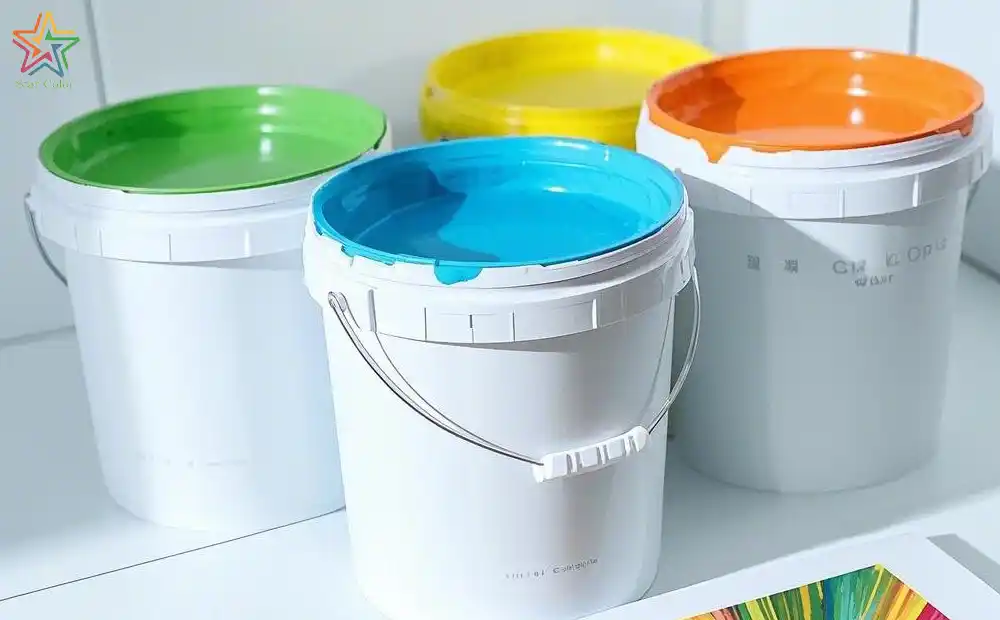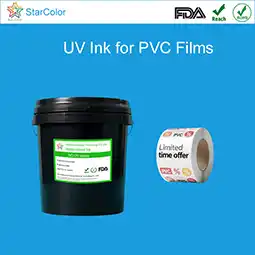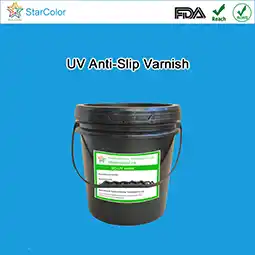Troubleshooting Poor Adhesion of Water-Based Flexographic Inks on Film Substrates
Date: Aug 19 2025 From: Star Color Views:
Film substrates such as BOPP, PET, and PE are widely used in premium packaging for food, pharmaceuticals, and personal care products due to their excellent barrier properties and chemical resistance. However, poor adhesion of water-based flexographic inks on films has long been a pain point for the printing industry.
Statistics show that nearly 30% of print quality complaints on films are directly related to insufficient adhesion. Poor adhesion not only causes printed graphics to peel or smear easily but can also result in significant economic losses.
This article provides a comprehensive troubleshooting guide for poor adhesion of water-based flexographic inks on films—from diagnosing symptoms to analyzing root causes and implementing systematic solutions. It aims to serve as a practical technical reference for converters and packaging printers.
1. Diagnosis of Adhesion Failures
Poor adhesion can manifest in several ways. Accurately identifying the defect type is the first step toward effective troubleshooting.
Common Failure Symptoms
-
Complete delamination: The ink layer can be peeled off entirely, leaving the film surface clean.
-
Partial ink loss: Random ink peeling occurs at edges, halftone dots, or large solid areas.
-
Post-processing ink peel: Prints pass adhesion tests initially but lose adhesion after lamination, pouch-making, or hot stamping.
-
Poor durability: Adhesion decreases during storage or use due to environmental changes such as humidity, temperature, or UV exposure.
Standard Test Methods
-
Crosshatch test (ASTM D3359): Cut a 10×10 grid of 1 mm² squares, apply 3M 610 tape, then peel rapidly. Adhesion is rated from 0B (worst) to 5B (best, no detachment). Film printing typically requires ≥4B.
-
Tape test: Apply tape directly on the print and peel vertically to check ink transfer.
-
Rub test: Rub the surface with dry or wet white cloth under 500 g load for 50 cycles and observe ink removal.
-
Bending test: Fold the printed sample 180° repeatedly and check for cracks or ink peeling along the crease.

2. Root Cause Analysis
Poor adhesion of water-based inks on films results from multiple contributing factors, which can be grouped into four categories:
1. Substrate Surface Properties
-
Low surface tension: Non-polar films (BOPP, PE) typically have surface energy of only 28–32 dyn/cm without treatment, far below the minimum 38 dyn/cm required for water-based inks.
-
Surface contamination: Slip agents, antistatic agents, or processing oils, along with dust or grease, create a barrier layer that prevents ink bonding.
-
High crystallinity: Some films (e.g., PP) have tightly packed molecular structures with few polar groups, making resin penetration difficult.
2. Ink Formulation Issues
-
Incompatible resin system: Standard acrylic resins used in water-based inks have weak adhesion to non-polar films. Without adhesion promoters, strong bonding is difficult.
-
Excess pigment loading: High pigment concentration prevents complete resin encapsulation of pigment particles, weakening film–substrate bonding.
-
Improper pH control: A pH that is too low or too high compromises film formation and adhesion.
3. Printing Process Parameters
-
Improper drying: Too fast or too slow drying causes incomplete curing, reducing adhesion.
-
Incorrect pressure: Excessive pressure damages the ink layer; too little prevents full ink contact with the substrate.
-
Wrong anilox selection: Inappropriate cell volume or line screen results in incorrect ink transfer, affecting ink film thickness and adhesion.
4. Environmental Factors
-
Poor temperature and humidity control: At <20°C, ink flow and wetting decline; humidity >65% extends drying time and worsens wetting angles.
-
Static electricity: Electrostatic charges cause uneven ink distribution and adhesion defects.
3. Systematic Troubleshooting Solutions
To resolve adhesion issues, actions should be taken across substrate treatment, ink formulation, process optimization, and environmental control.
1. Substrate Pretreatment
-
Enhanced corona treatment:
-
Ensure film surface tension reaches 38–42 dyn/cm.
-
Use power density of 30–50 W·min/m².
-
Treated films should be printed within 24 hours to avoid decay of surface energy.
-
-
Chemical pretreatment:
-
For difficult substrates like PE, apply adhesion promoters (e.g., chlorinated polypropylene, polyurethane primers).
-
Coating weight: 0.1–0.3 g/m² for uniform coverage.
-
-
Surface cleaning:
-
Use ionized air or lint-free wipes to remove dust and grease.
-
Plasma cleaning can further enhance surface cleanliness.
-
2. Ink Formulation Adjustments
-
Resin system optimization:
-
Use resins with better adhesion, such as modified acrylic resins with chlorinated polypropylene, or PU–acrylic hybrids.
-
Add adhesion promoters such as silane or titanate coupling agents.
-
-
Pigment volume concentration (PVC):
-
Keep pigment volume at 70–80% of the critical PVC, typically not exceeding 40%.
-
Use finely dispersed pigments for better resin compatibility.
-
-
pH and viscosity control:
-
Maintain ink pH between 8.0–8.5, adjusted with amines such as AMP-95.
-
Adjust viscosity to 20–35 cps at 25°C, depending on press speed and anilox roller.
-
3. Process Optimization
-
Drying profile:
-
Stage 1: 40–50°C (initial evaporation).
-
Stage 2: 50–60°C (mid curing).
-
Stage 3: 60–70°C (final setting).
-
Total dwell time: 1–3 seconds.
-
-
Printing pressure:
-
Set between 1.5–3.0 bar, depending on plate and substrate.
-
Monitor with sensors for stability.
-
-
Anilox roller selection:
-
Fine text & halftones: 600–800 lpi.
-
General graphics: 400–600 lpi.
-
Large solids: 300–400 lpi.
-
Keep rollers clean with regular ultrasonic cleaning.
-
4. Environmental Control
-
Temperature & humidity:
-
Maintain pressroom at 23±2°C and 50±5% RH.
-
-
Static elimination:
-
Install ionizers before and after the press.
-
Keep substrate surface voltage <500 V.
-
Ensure proper press grounding (<4 Ω resistance).
-
4. Case Study: Solving Adhesion Issues in BOPP Film Printing
Background
A food packaging company in China used water-based flexo inks for printing BOPP biscuit wrappers. Severe adhesion problems occurred: crosshatch adhesion only rated 2B, with large ink loss in tape tests, leading to a 15% waste rate.
Diagnosis
-
Substrate: Surface tension only 32 dyn/cm, below the required 38 dyn/cm.
-
Ink: pH measured 7.5; resin system was pure acrylic without adhesion promoters.
-
Process: Corona treatment at only 20 W·min/m²; drying at 70°C with 0.8 s dwell time.
-
Environment: Humidity at 75%, temperature fluctuating between 18–28°C.
Solutions
-
Substrate: Increased corona treatment to 40 W·min/m², achieving 40 dyn/cm; films used within 12 hours.
-
Ink: Added 1.5% silane adhesion promoter; adjusted pH to 8.2 with AMP-95; viscosity increased from 25 cps to 30 cps.
-
Process: Adjusted drying profile (45°C → 55°C → 65°C) with 1.5 s dwell time; printing pressure increased from 2.0 bar to 2.5 bar.
-
Environment: Installed dehumidifiers to lower RH to 50%; stabilized room temperature at 23°C; added static eliminators.
Results
-
Crosshatch adhesion improved to 5B.
-
No ink removal in tape test.
-
Rub test (500 g load, 50 cycles) showed no visible ink loss.
-
Waste rate reduced from 15% to below 0.5%, saving approximately USD 12,000 per month.
Conclusion
Poor adhesion of water-based flexographic inks on films is a complex technical challenge involving substrate, ink, process, and environmental factors. A systematic approach—combining substrate pretreatment, ink formulation optimization, process parameter adjustments, and strict environmental control—is essential to resolving adhesion problems.
In the long term, converters should also invest in robust quality control systems, technical innovation, and operator training. Only by doing so can the industry fully leverage the environmental advantages of water-based flexo printing while meeting the stringent quality requirements of premium packaging markets.
If you encounter adhesion issues with water-based flexographic inks in your production, our technical team is ready to provide professional support and tailored solutions.
 RU
RU EN
EN CN
CN















